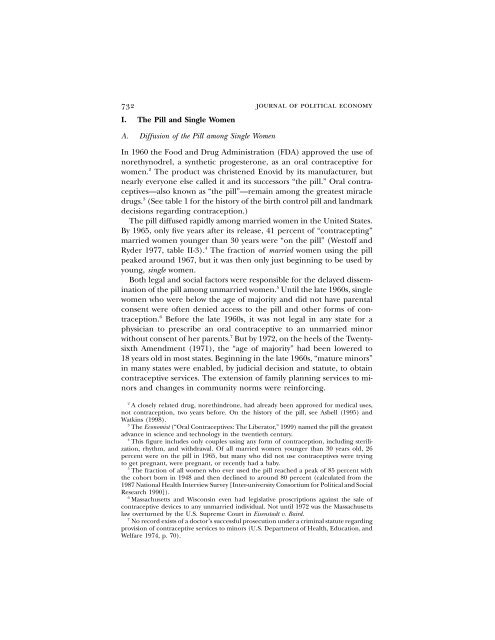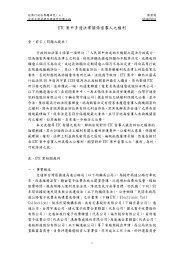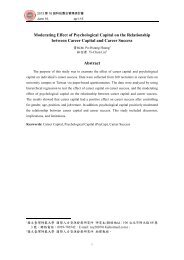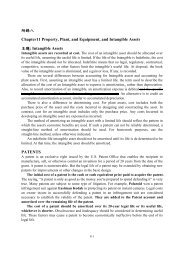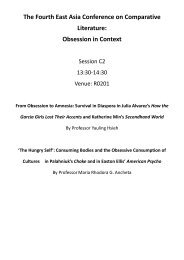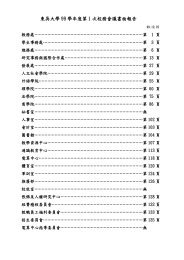The Power of the Pill: Oral Contraceptives and Women's ... - Mail
The Power of the Pill: Oral Contraceptives and Women's ... - Mail
The Power of the Pill: Oral Contraceptives and Women's ... - Mail
You also want an ePaper? Increase the reach of your titles
YUMPU automatically turns print PDFs into web optimized ePapers that Google loves.
732 journal <strong>of</strong> political economy<br />
I. <strong>The</strong> <strong>Pill</strong> <strong>and</strong> Single Women<br />
A. Diffusion <strong>of</strong> <strong>the</strong> <strong>Pill</strong> among Single Women<br />
In 1960 <strong>the</strong> Food <strong>and</strong> Drug Administration (FDA) approved <strong>the</strong> use <strong>of</strong><br />
norethynodrel, a syn<strong>the</strong>tic progesterone, as an oral contraceptive for<br />
women. 2 <strong>The</strong> product was christened Enovid by its manufacturer, but<br />
nearly everyone else called it <strong>and</strong> its successors “<strong>the</strong> pill.” <strong>Oral</strong> contraceptives—also<br />
known as “<strong>the</strong> pill”—remain among <strong>the</strong> greatest miracle<br />
drugs. 3 (See table 1 for <strong>the</strong> history <strong>of</strong> <strong>the</strong> birth control pill <strong>and</strong> l<strong>and</strong>mark<br />
decisions regarding contraception.)<br />
<strong>The</strong> pill diffused rapidly among married women in <strong>the</strong> United States.<br />
By 1965, only five years after its release, 41 percent <strong>of</strong> “contracepting”<br />
married women younger than 30 years were “on <strong>the</strong> pill” (West<strong>of</strong>f <strong>and</strong><br />
Ryder 1977, table II-3). 4 <strong>The</strong> fraction <strong>of</strong> married women using <strong>the</strong> pill<br />
peaked around 1967, but it was <strong>the</strong>n only just beginning to be used by<br />
young, single women.<br />
Both legal <strong>and</strong> social factors were responsible for <strong>the</strong> delayed dissemination<br />
<strong>of</strong> <strong>the</strong> pill among unmarried women. 5 Until <strong>the</strong> late 1960s, single<br />
women who were below <strong>the</strong> age <strong>of</strong> majority <strong>and</strong> did not have parental<br />
consent were <strong>of</strong>ten denied access to <strong>the</strong> pill <strong>and</strong> o<strong>the</strong>r forms <strong>of</strong> contraception.<br />
6 Before <strong>the</strong> late 1960s, it was not legal in any state for a<br />
physician to prescribe an oral contraceptive to an unmarried minor<br />
without consent <strong>of</strong> her parents. 7 But by 1972, on <strong>the</strong> heels <strong>of</strong> <strong>the</strong> Twentysixth<br />
Amendment (1971), <strong>the</strong> “age <strong>of</strong> majority” had been lowered to<br />
18 years old in most states. Beginning in <strong>the</strong> late 1960s, “mature minors”<br />
in many states were enabled, by judicial decision <strong>and</strong> statute, to obtain<br />
contraceptive services. <strong>The</strong> extension <strong>of</strong> family planning services to minors<br />
<strong>and</strong> changes in community norms were reinforcing.<br />
2<br />
A closely related drug, norethindrone, had already been approved for medical uses,<br />
not contraception, two years before. On <strong>the</strong> history <strong>of</strong> <strong>the</strong> pill, see Asbell (1995) <strong>and</strong><br />
Watkins (1998).<br />
3<br />
<strong>The</strong> Economist (“<strong>Oral</strong> <strong>Contraceptives</strong>: <strong>The</strong> Liberator,” 1999) named <strong>the</strong> pill <strong>the</strong> greatest<br />
advance in science <strong>and</strong> technology in <strong>the</strong> twentieth century.<br />
4<br />
This figure includes only couples using any form <strong>of</strong> contraception, including sterilization,<br />
rhythm, <strong>and</strong> withdrawal. Of all married women younger than 30 years old, 26<br />
percent were on <strong>the</strong> pill in 1965, but many who did not use contraceptives were trying<br />
to get pregnant, were pregnant, or recently had a baby.<br />
5<br />
<strong>The</strong> fraction <strong>of</strong> all women who ever used <strong>the</strong> pill reached a peak <strong>of</strong> 85 percent with<br />
<strong>the</strong> cohort born in 1948 <strong>and</strong> <strong>the</strong>n declined to around 80 percent (calculated from <strong>the</strong><br />
1987 National Health Interview Survey [Inter-university Consortium for Political <strong>and</strong> Social<br />
Research 1990]).<br />
6<br />
Massachusetts <strong>and</strong> Wisconsin even had legislative proscriptions against <strong>the</strong> sale <strong>of</strong><br />
contraceptive devices to any unmarried individual. Not until 1972 was <strong>the</strong> Massachusetts<br />
law overturned by <strong>the</strong> U.S. Supreme Court in Eisenstadt v. Baird.<br />
7<br />
No record exists <strong>of</strong> a doctor’s successful prosecution under a criminal statute regarding<br />
provision <strong>of</strong> contraceptive services to minors (U.S. Department <strong>of</strong> Health, Education, <strong>and</strong><br />
Welfare 1974, p. 70).


